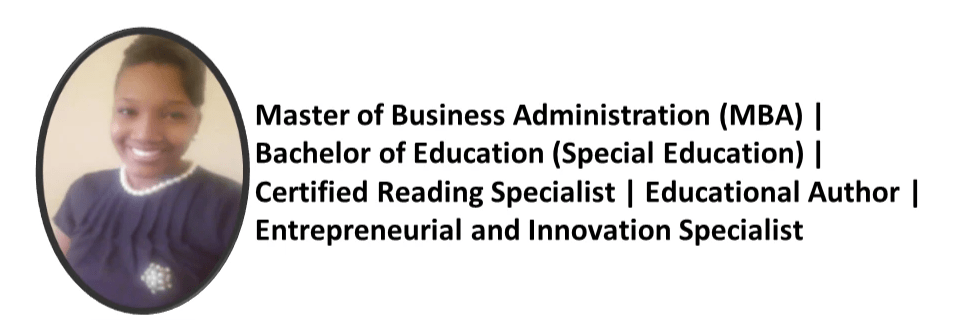Get the best Scholastic Educational Articles in your inbox with thelatest insights from our experts across the globe. Subscribe today!
Abstract
Hearing impairment, a challenge faced by many, requires a comprehensive approach to facilitate a child's journey towards a fulfilling life. This narrative article explains the inspiring story of Jase, an eight-year-old boy with hearing impairment, showcasing the collaborative efforts of a specialist team, dedicated parents, and the resilience of the young learner. The article addresses the identification of hearing problems in children, the implementation of Individualized Education Plans (IEPs) in special needs education, the roles of various specialists, and effective strategies for teaching and supporting a child like Jase. As we unfold Jase's transformative journey, we share valuable insights to encourage parents, teachers, therapists, and doctors facing similar challenges.
Introduction
In the intricate tapestry of educational narratives, the story of Jase emerges as a testament to resilience, collaboration, and the boundless possibilities that unfold when a community rallies behind a child facing hearing impairment. From the initial whispers of concern to the triumphant crescendo of Jase's artistic and academic achievements, this article unravels the comprehensive support system that guided him through the harmonious integration of special education strategies and the warmth of a nurturing home. As we traverse through the stages of identifying hearing impairment, crafting individualized education plans, and witnessing the blossoming of Jase's unique abilities, we illuminate the path
for parents, educators, and specialists navigating similar journeys. On this symphonic odyssey, where each note is a victory, and silence resonates
with the promise of limitless potential.
What is hearing impairment?

Hearing impairment encompasses various degrees, from mild to profound. Identifying hearing problems in children often begins with observation. Initially, parents may notice a lack of response to sounds or delayed speech development. As Jase's story unfolds, his journey from birth to receiving a hearing aid at age seven exemplifies the importance of early detection. Once identified, parents should seek professional evaluation, involving audiologists and otolaryngologists. Timely intervention, such as the fitting of hearing aids or cochlear implants, can significantly impact a child's communication abilities.
The IEP in Special Needs
An Individualized Education Plan (IEP) is a personalized roadmap for students with special needs. For Jase, the IEP became the cornerstone of his educational journey, tailoring interventions to meet his specific requirements. The IEP addresses academic, social, and emotional goals, which he will transition into an inclusive environment within mainstream education.

A Multidisciplinary Team
Creating an effective IEP for a child like Jase involves a multidisciplinary team. Audiologists, speech therapists, special education teachers, general education teachers, and parents collaborate to address diverse needs. Regular communication and a shared commitment to Jase's progress form the backbone of this team.
Literacy Development
Learning to read and write using spatial awareness and movement strategies to start the process of teaching for 8-year-old Jase, based on his disability was not a severe challenge because with the nurturing love of his family, Jase was emotional stable and excited to learn the different sounds around him. The parents did not want to enroll him in an inclusive environment in the beginning fearing his emotional stability would change.
Jase's journey into literacy involved innovative strategies, considering his spatial awareness and movement preferences. Specialized teaching techniques, integrating visual aids and hands-on activities, became instrumental in bridging the gap between his hearing impairment and the acquisition of language skills. Adapting the curriculum to suit his learning style allowed Jase to thrive academically.
The IEP for Jase
Jase's IEP is a dynamic document outlining his unique needs, goals, and strategies for success. It delineates specific accommodations, such as preferential seating and modified assignments, ensuring an inclusive learning experience. Regular reviews and adjustments are integral to Jase's evolving educational plan.
After one year of his hearing aid, his speech improved.

Jase's progress after a year with the hearing aid was remarkable. During a collaborative meeting, specialists noted improvements in his speech and overall communication skills. This positive development underscored the effectiveness of early intervention and the significance of ongoing support.

Best Practice Tips
Speech Therapist:
· Tailoring sessions to Jase's interests and incorporating speech exercises into daily activities enhanced his speech development.
· The therapist emphasized consistent practice and encouraged positive reinforcement.
Special Ed Teacher (Reading and Writing Programme):
· Utilizing spatial awareness, movement, and visual aids, the teacher implemented a personalised reading and writing programme.
· The emphasis was on creating a supportive environment that accommodated Jase's learning style.
3. Parent Involvement in Home Schooling:

· Jase's parents played a pivotal role in his education.
· Consistency in implementing strategies from therapy sessions at home, creating a supportive learning environment, and actively participating in progress reviews contributed significantly to Jase's success.
Doctor’s Appointments for Hearing Aid:
· Regular check-ups with audiologists ensured optimal functionality of Jase's hearing aid.
· Proactive management of any issues or adjustments was crucial for his continued progress.
Physical Ed Teacher:

· Clear communication strategies and modified activities enabled Jase to participate fully, promoting both physical and social development.
Conclusion
Jase's journey illustrates the transformative power of collaborative efforts in special needs education. Through early intervention, a well-crafted IEP, and a dedicated team, Jase not only overcame hurdles but emerged with aspirations for a future in business leadership. This narrative stands as a beacon of hope for parents, educators, therapists, and doctors, showcasing the potential for success when a community unites to support a child with hearing impairment. As Jase prepares to transition to mainstream education, his story inspires us all to believe in the possibilities that lie ahead.
As the final notes of Jase's educational journey echo, we are reminded that the harmony in silence lies not only in overcoming challenges but in embracing the unique melody each child brings to the world. Jase's transition into mainstream education is not just a conclusion but a prelude to a future he envisions as a business leader, a dream now within his grasp. Let this narrative serve as a beacon of hope, illuminating the collective power of love, understanding, and collaboration. As we applaud Jase's triumphs, let us carry forward the symphony of support, ensuring that every child, regardless of challenges, can compose their own masterpiece and contribute to the beautiful symphony of education and inclusion.
Frequently Asked Questions
1. Q: What is the process for identifying hearing impairment in children?Early signs include delayed speech development and lack of response to
sounds. Parents should seek professional evaluation by audiologists and
otolaryngologists.
2. Q: What does an IEP stand for inspecial needs education?
An Individualized Education Plan (IEP) is a personalized educational roadmap
for students with special needs, outlining goals and strategies tailored to
their unique requirements.
3. Q: Who are the specialists involved inimplementing an IEP for a child with hearing impairment?
Specialists may include audiologists, speech therapists, special education
teachers, general education teachers, and parents, forming a collaborative team
to address diverse needs.
4. Q: How are spatial awareness and movement strategies used in teaching children with hearing impairment to read and write?
Spatial awareness and movement strategies are integrated into the
curriculum, utilizing visual aids and hands-on activities to accommodate the
child's learning style.
5. Q: What does an effective IEP layout for teachers and specialists typically include?
An IEP layout includes academic, social, and emotional goals, accommodations, and modifications, with regular reviews and adjustments to support the child's development.
6. Q: How can a hearing aid contribute tospeech improvement in children?
A hearing aid, when integrated with speech therapy, can contribute to
improved speech clarity and communication skills, as noted in collaborative
meetings with specialists.
7. Q: What are the best practices recommended by speech therapists, special education teachers, and parents in supporting a child with hearing impairment?
Practices include targeted speech therapy exercises, personalized reading
and writing programs, and consistent involvement of parents in reinforcing
strategies at home.
8. Q: How are reading and writing strategies adapted for children with hearing impairment?
Strategies may involve a multisensory approach, visual aids, and modified
assignments to accommodate the child's learning style, ensuring inclusivity in
reading and writing programs.
9. Q: What accommodations and modifications are commonly implemented in a school setting for children with hearing impairment?
Accommodations may include preferential seating, visual aids, modified
assignments, extended time for assessments, and technology integration,
ensuring an inclusive learning experience.
10. Q: How is the transition plan typically structured for children with hearing impairment entering mainstream education?
The transition plan involves collaboration with general education teachers,
a gradual integration process, and ongoing support to prepare the child for a
successful transition into mainstream education.
References:
Special Needs Education:
IEPs (Individualized Education Plans):
Science of Reading and Writing:
Hearing Impairment:




